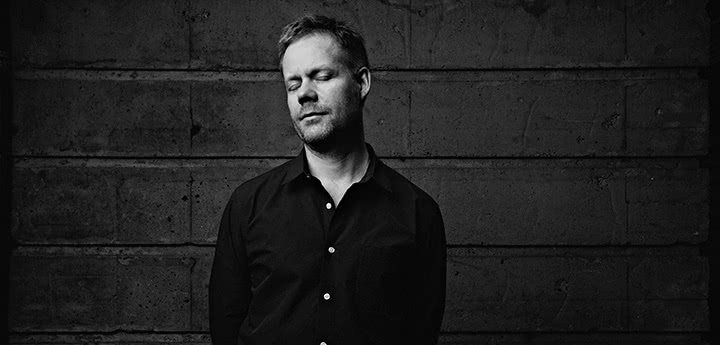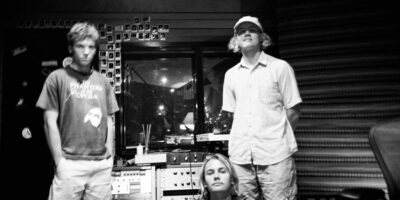As far as album titles go,Sleep– the new release from UK contemporary minimalist composer Max Richter – is as plainly descriptive as they come. Clocking in at eight hours and 24 minutes, it ranks among the longest single pieces in the history of classical music. However, Richter isn’t asking you to ditch work and giveSleepyour utmost attention for its entire duration. Rather, the music is designed to be played while you’re sleeping – the running time reflecting the length of a healthy night’s rest.
Considering music is essentially something we listen to, it seems like a nihilistic extravagance to advise that Sleep gets played once conscious thought switches off. However, the record is accompanied by a one-hour piece of music, From Sleep, which is geared towards listening.
“They’re two trips through a shared landscape,” says Richter. “One of which is to be experienced, really – inhabited, you might say – and that’s the eight-hour project, which is the core of the idea. It’s a little bit like the painting of Mark Rothko or some of the early minimal music from the ’60s – a sort of object to be inhabited, maybe navigated unconsciously.
“Then we have the one-hour piece. It’s a bit like a daydream. It’s for the gazing-out-of-the-window space and it has a grammar which is structured for listening. It’s not the same music as the big piece; there are things on the one-hour piece which aren’t on the big piece. And actually it has a slightly different musical grammar and a different register.”
In seeking ways to summarise From Sleep, you can’t look past the gentle beauty that pervades the whole piece. Although there are moments that encourage melancholic reflection – the ambient tracks ‘Space 11’ and ‘Space 21’ in particular – the lovely, unhurried instrumentation is liable to lull one into the sort of relaxed frame of mind that’s necessary for falling asleep.
“Both pieces obviously share the basic themes and the basic character, and that is one of it being an environment which would foster something more than that one-dimensional engagement with data and information,” Richter says. “That’s not a critique of us as human beings, that’s a critique of the environment we’ve manufactured – we’re in this data blizzard. Both of these works are an indication to a more reflective engagement with material, and that’s why they have that quite measured pace throughout.”
Richter has described the project as his “manifesto for a slower pace of existence”, but he certainly isn’t promoting lethargy or stagnant blankness. His focus is on the apparent benefits that develop from periods of composed stillness. We move at a frenetic pace in the contemporary world, and especially in the time of digitalisation and high-speed internet, things are consumed in a fragmented way. Despite the inescapable emphasis on efficiency, however, we rarely set aside time for moments of meditative calm.
“People working in creative fields have often felt that. When you say, ‘I’ve got to sleep on that idea,’ we’re actually talking about something that we do need to do. The brain actually does do something while we’re sleeping. I was reading the other day about the way that they’re mapping the topography of the brain during various activities, and actually the brain is very busy – in a structuring mode – when people are basically doing nothing.
“The cliché of artists is that they just spend all their time staring out of the window blankly. It turns out that that is work. I think we intuitively associate productivity with activity. Of course, that’s usually true, but not always. There is another way to engage with things and there’s another way to be productive, but without the active surface.”
Music has long been a powerful tool for transporting people beyond their reality and altering the perception of time. Richter agrees that music has a causal power over human feelings, which gives it the potential to ignite constructive change.
“The idea that a piece of music can influence the way we feel and the way we act – I think that’s embedded in human society. War music the world over is associated with drums and trumpets; conversely, the lullaby, for example, has a particular character; and we’ve obviously come to associate happy and sad with major and minor keys. So there does seem to be this connection between the feeling/interior world and music itself. After all, if that weren’t there then we probably wouldn’t listen to music. In this project it’s a question of the intentionality behind it.”
On the topic of intentions, whenever an artist conceives a new project, the question of what it will achieve comes to the fore. Richter is fuelled less by abstract concerns and more an intangible compulsion.
“I mostly proceed instinctively. Obviously I have a set of hopes and ambitions and thoughts and concepts and intentions behind the things. But most people, whether it’s novelists or musicians or painters or whatever, I think the thing that gets you started [is] you get a sense the thing wants to be written. Of course, it’d be interesting to explore the neuroscience aspect of that, because in a way a part of the mind’s talking to another part of the mind – one of which we have access to and one of which we don’t. But I think that’s the instinct – you have a story which feels like it wants to be told, so that’s what starts you off.”
Max Richter’sFrom Sleep is out now through Universal.


































